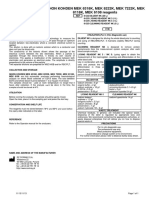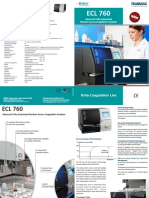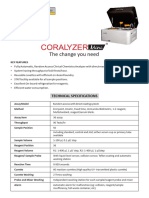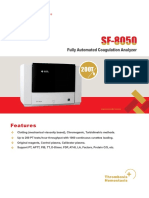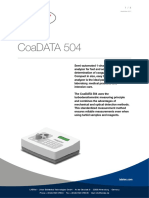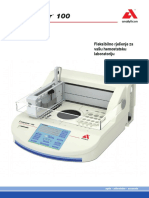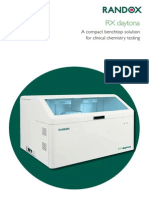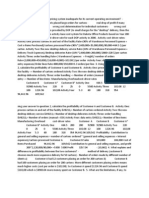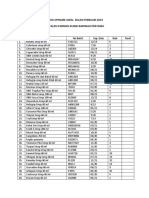What is a Semi-Automatic Biochemistry Analyzer?
A Biochemistry Analyzer is a clinical chemical analyzer machine that measures the components
within a collected biological sample consisting of blood, urine, plasma, and so on. While initially,
this process was carried out manually by lab technicians and analysts, it gradually became tedious
enough to cause hindrances. To avoid the delay in delivering test results for each sample, the need
for an analyzing machine was registered. Technology gave way to an Automatic Biochemistry
Analyzer.
This machine enables the diagnosis of diseases and the potential cause of issues and symptoms in
the human body. There might be different variants of the analyzer each of which needs to be
studied and the needs realized to recognize which level of automation is required for the analyzer.
Here, we are considering the Semi-Automatic Biochemistry Analyzer.
How does Semi-Automatic Biochemistry Analyzers Work?
Semi-Automated Biochemistry Analyzers work based on two measurement methods: optical
techniques and electrochemical techniques. The working is similar to that of the Fully Automated
Biochemistry Analyzers. The main difference is that Semi-Automatic analyzers are more practical
for use in smaller laboratories and medical practices. This is due to it being able to handle a lower
number of samples at a time as compared to the fully automatic one.
For this, the samples and reagents are not pre-prepared and stored but set up separately each time
a test is conducted. That is why it is Semi-Automatic. Though this slows the process of testing as
a whole it has a great benefit as it provides tremendous flexibility when the type of tests differs
making the reagents vary each time.
Though in either case, a Semi-Automatic biochemistry analyzer follows the Colorimetry,
Photometry, and Absorbance principles for working under the optical techniques. While it follows
the working of direct potentiometry and indirect potentiometry principles under the category of
electrochemical techniques. To understand if a Semi-Automatic analyzer meets your needs, you
need to choose a measurement technique, operation method, device rate required, sample status,
and reagent management to understand the need.
Key Features
1. Flow cell and cuvette modes must be there to ensure all types of tests can be done.
2. Onboard reaction curve to monitor results for different parameters.
3. Multiple filters for different applications
4. Simple user interface for ease of use
5. Auto-save functionality for measurements in the case of power-off
6. It can store up to 500 test samples and around 10000 test results
�7. It has many print and store methods for results and report generation.
Principle Behind the Working of Chemistry Analyzer
The chemistry analyzer or the semi-automated biochemistry analyzer work on the principle of
filter photometry. The working of this principle is as follows:
1. A light source such as halogen lamp is taken that emits light.
2. This light is then made to pass through a convex lens because the light rays converge into a
single beam.
3. In the flow cell of the chemistry analyzer, the sample to be tested is kept. The beam of converged
light is passed through this sample.
4. The sample absorbs certain light energy as per its behavior. At the same time, some amount of
light remains unabsorbed.
5. The remaining light not absorbed is then made to pass through a color filter screen called as an
interference filter to convert the light in to a single wavelength or narrow wavelength bandwidth.
6. Followed by this, the light falls on the photodetector after which it is converted to the electrical
energy for the microprocessor.
In this process, the amount of light absorbed and other characteristics are calculated to measure
the value of the analyte desirable to be estimated in patient sample. The chemistry analyzer then
works on the measured values to find the possible issues with the sample on the basis of the result
generated.
